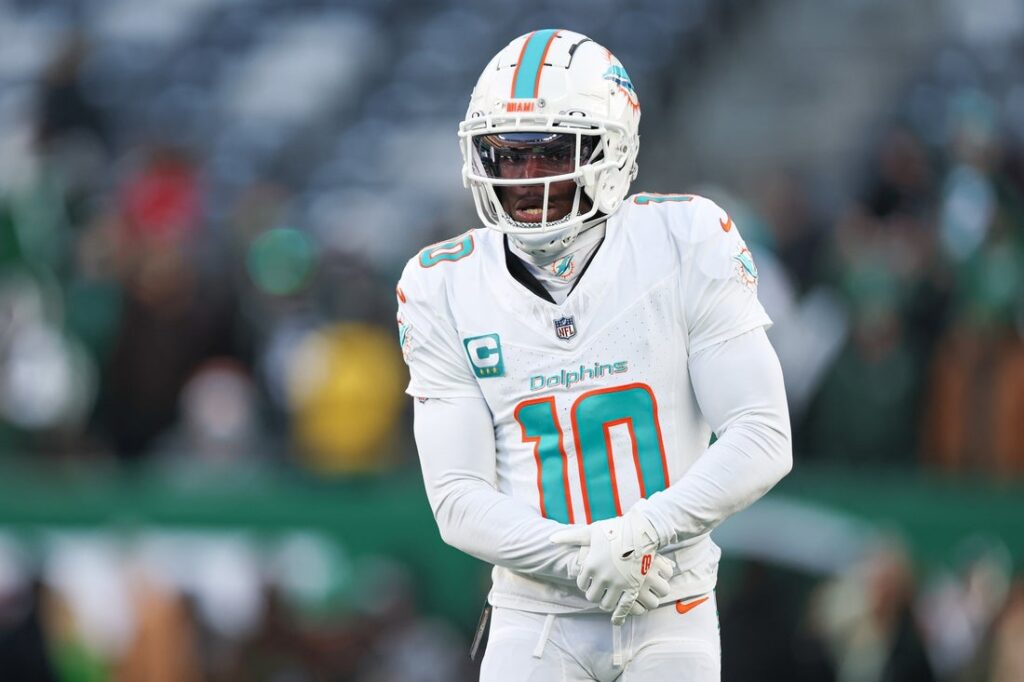NFL trade rumors are heating up with whispers of a potential deal that could bring star wide receiver Tyreek Hill from the Miami Dolphins to the Dallas Cowboys. If this trade comes to fruition, it would have significant impacts on both teams, particularly in terms of roster strategy and long-term planning. For the Cowboys, acquiring Hill could be a bold step to bolster their offense, but it also raises questions about the cost—both in draft capital and future flexibility.

Strategic Impact on the Cowboys’ Roster
On the field, Hill’s arrival could completely shift the Cowboys’ offensive dynamics. With his explosive speed and ability to make highlight-reel plays, Hill would be the perfect complement to CeeDee Lamb, forming a formidable wide receiver duo capable of stretching defenses and creating space for quarterback Dak Prescott. Hill’s versatility—from deep routes to slot plays and jet sweeps—would add a layer of unpredictability and firepower to Dallas’ offensive schemes.
However, the risks are significant. By 2026, Hill will be 33 years old—an age when speed-dependent players often begin to decline. The Cowboys would need to maximize his impact in the short term while preparing for his potential regression. Additionally, Hill’s presence could invite more blitzes from opponents, putting greater pressure on Dallas’ offensive line to protect Prescott. Without a strong enough line, the benefits of adding Hill could be diminished, leaving the team vulnerable in critical moments.
Long-Term Value of Draft Picks
To acquire Hill, the Cowboys may have to part with valuable draft assets, potentially including a second-round pick and additional compensation. This trade-off would limit their ability to address other critical needs, such as strengthening the offensive line, upgrading the secondary, or adding depth at edge rusher. While Hill could provide an immediate boost to the offense, the Cowboys must weigh this against the long-term benefits of developing young talent through the draft.
At 33, Hill may only have one or two peak seasons left, whereas draft picks offer the potential for sustained contributions over many years. If the Cowboys can restructure Hill’s contract to ease the salary cap burden, they might mitigate some financial pressure. However, heavily investing in a veteran without a clear long-term plan could hinder the team’s ability to maintain a balanced and competitive roster in the future.
Conclusion
In summary, acquiring Tyreek Hill presents the Dallas Cowboys with an enticing opportunity to elevate their offense and make a Super Bowl push. However, it also comes with significant risks, both in terms of roster balance and long-term sustainability. The Cowboys must carefully consider whether the short-term gains outweigh the potential costs, especially as they aim to build a championship-contending team. Ultimately, the decision will hinge on their priorities: seizing the moment with a proven star or investing in the future through the draft.